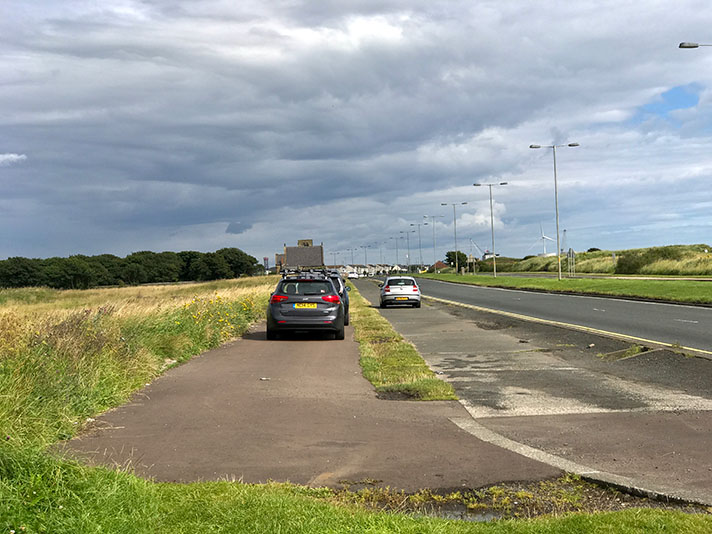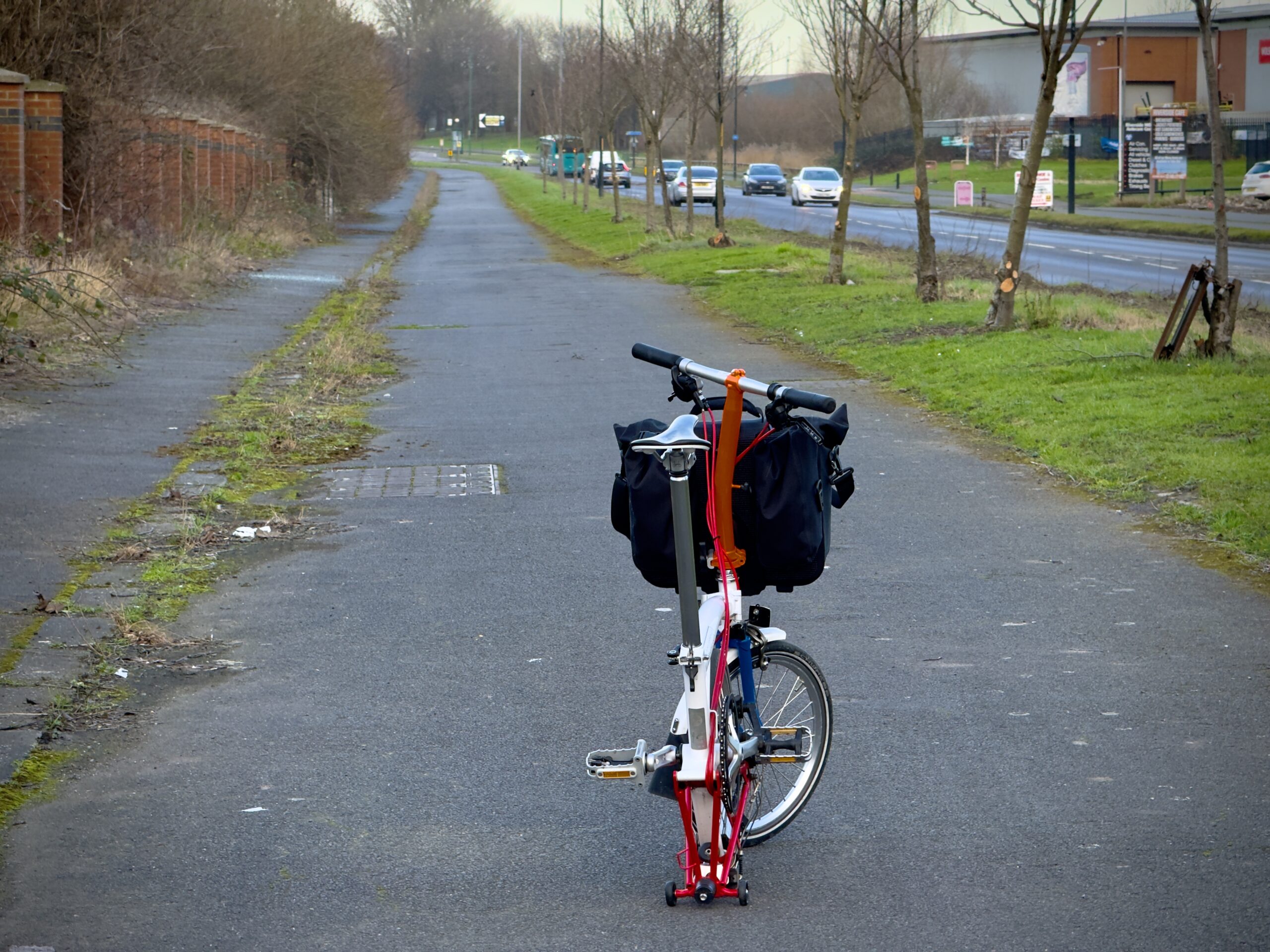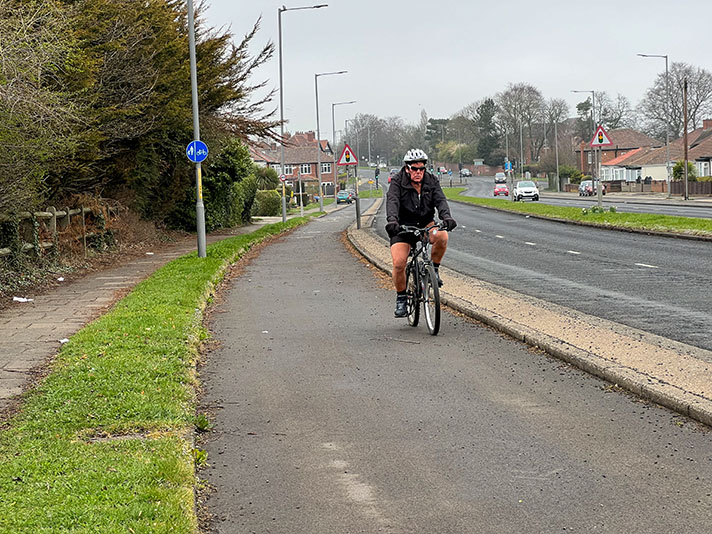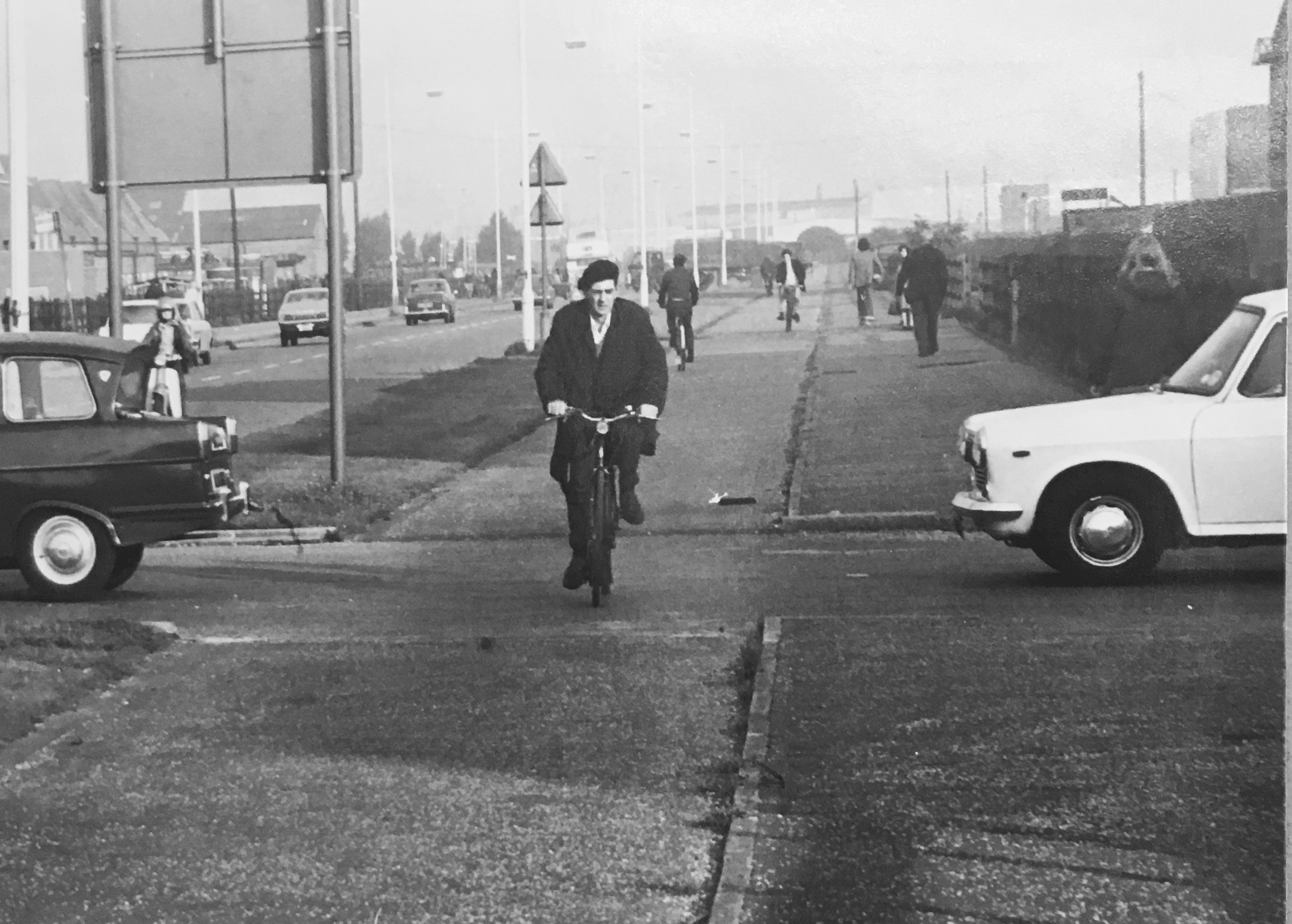
Cycle track in use on Barton Dock Road, 1970s. Photo by Mike Ashworth.
Today’s Trafford Centre shopping mall was built on part of Trafford Park, the first planned industrial estate in the world. Three miles southwest of Manchester city centre, the former deer park played a pivotal role in WWII — aircraft engines were built here — and it was also the site chosen for factories from the likes of Ford and Kelloggs.
Trafford Park was once owned by one of the region’s oldest and richest families, the de Traffords. They sold their land for development at the end of 19th century following the construction of the Manchester Ship Canal which attracted industry to the outskirts of their deer park and within sight of Trafford Hall.
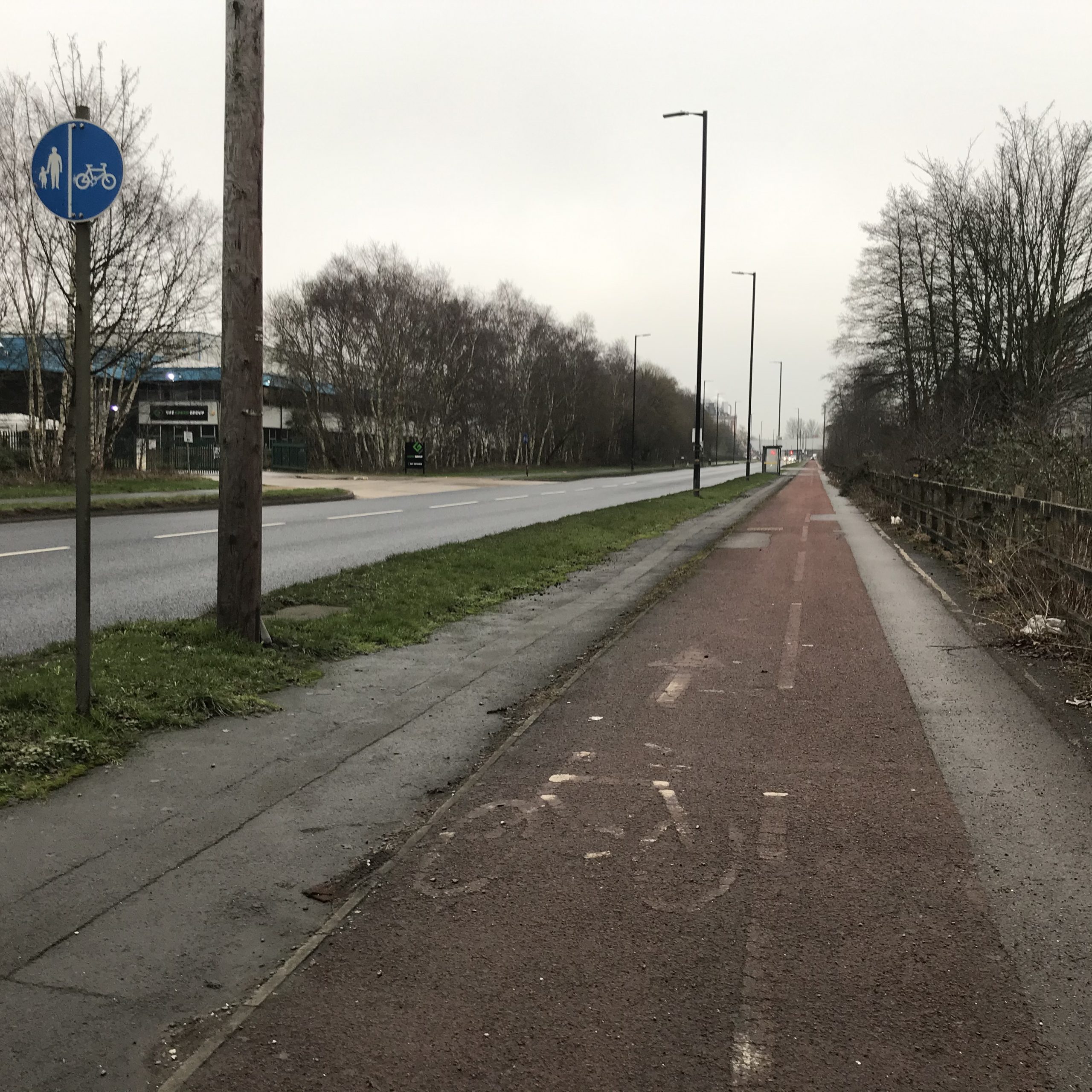
Barton Dock Road.
The park was bought in 1896 by the London-based company promoter — and fraudster — Ernest Terah Hooley. He set about creating the world’s first industrial estate — also to include a racetrack, exclusive housing and a cycle factory — but his shady dealings in the mid-1890s bicycle boom and the nascent automotive trade caught up with him and forced his departure from his role as chair of Trafford Park Estates Ltd.
The company nevertheless later prospered, with plots sold to numerous expanding businesses, including American company Westinghouse Electric which formed a British subsidiary — British Westinghouse Electric Company – in 1899 and was making turbines and electric generators in a Trafford Park factory by 1902. The company was bought by Vickers Company in 1919 and renamed Metropolitan-Vickers, or Metrovicks.
Ford opened a factory in Trafford Park in 1911, its first outside of the US. The company’s assembly line method — adapted from methods Henry Ford witnessed in visits to bicycle factories in the 1890s — was introduced at roughly the same time in Trafford Park as in Detroit. By 1920, before the company opened its Dagenham plant, 26,000 Ford cars were being produced each year at Trafford Park.
Kellogg’s moved into the park in 1938; its production facility is still there.
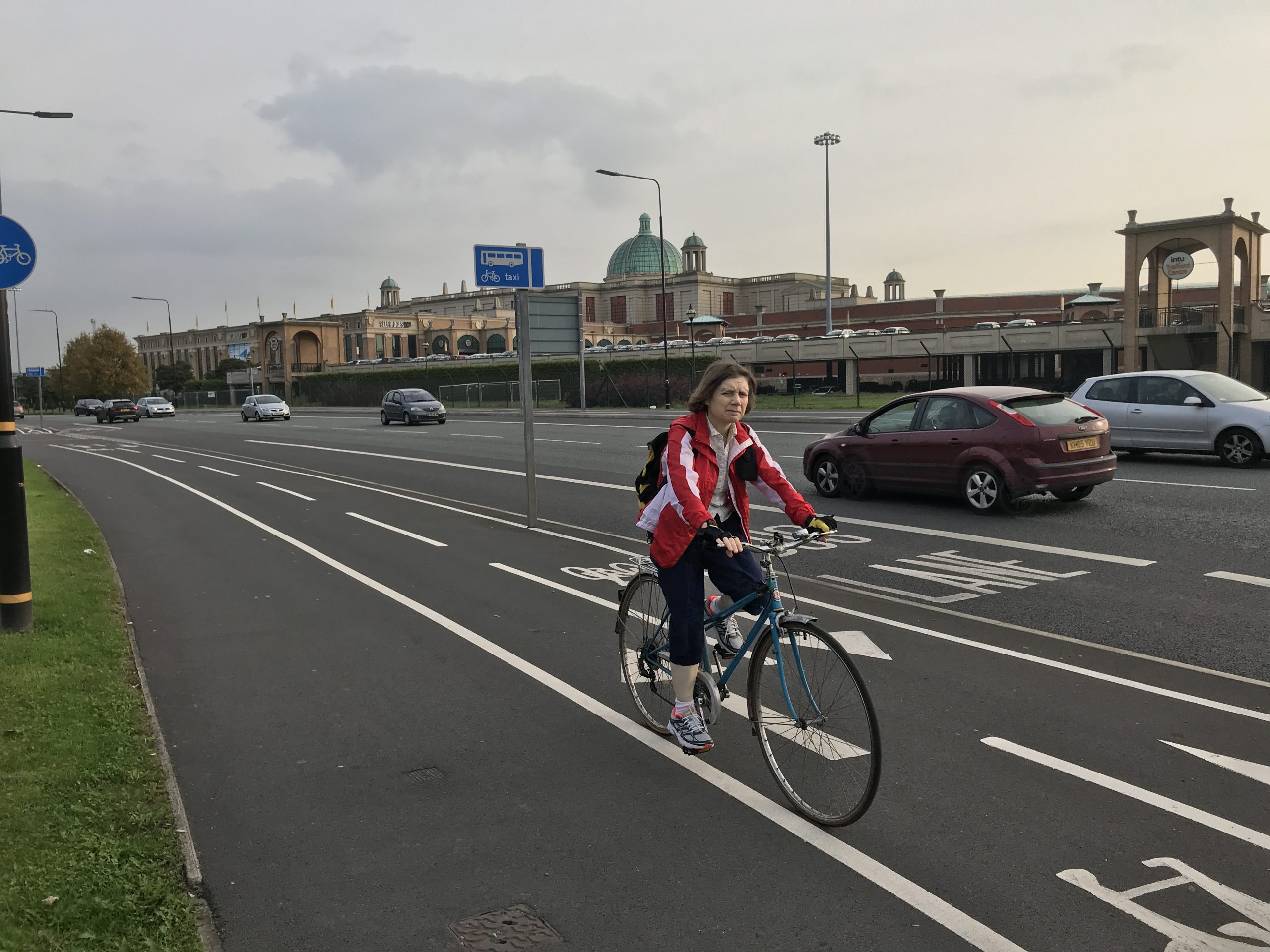
Today, there are still tracks close to what is now the Trafford Centre.
During WWII almost all of the 400 or so factories on Trafford Park were devoted to the war effort. By 1945, 75,000 workers were commuting to the estate daily, many of them on bicycles, and it’s likely the cycle tracks on Barton Dock Road were well used.
In the 1930s, Manchester was at the centre of one of the most densely populated areas in the world. According to the 1921 census, ten million people lived within a 50-mile radius of Trafford Park. There was a daily mass movement of people to and from Trafford Park, requiring efficient public transport as well as cycle tracks. The estate had its own tramway by the beginning of the 20th Century and there were also many bus services. A survey conducted in 1962 showed that nearly 300 buses left Trafford Park each evening.
Rolls-Royce Merlin engines — used to power both the Spitfire fighter and the Lancaster bomber — were built under licence on the estate by Ford. The 17,316 workers employed in a new Ford factory, opened in 1941, had produced 34,000 engines by the end of the war.
There was a steady decline in worker numbers following the war with many of the factories lying dormant and the estate in need of redevelopment. The workforce had fallen to 15,000 by 1976. A portion of Trafford Park became the Trafford Centre following the creation of the Trafford Park Urban Development Corporation in 1987 and the body steadily reversed the estate’s decline.


